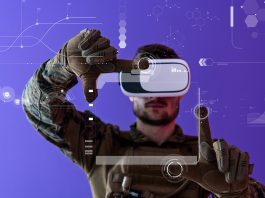Pau Garcia, Founder of Domestic Data Streamers, details how Synthetic Memories can be used to tackle threats of AI to culture and identity.
The meteoric rise of Generative Artificial Intelligence (GEN-AI) has reshaped countless facets of several disciplines. While it brings unprecedented advancements, it also stirs deep concerns about potential impacts on global culture and identity. At the heart of this technological transformation is a research line at Domestic Data Streamers called Synthetic Memories – a project that helps to paint both a hopeful and cautionary tale of our collective future and interpretation of the past.
Research into Synthetic Memories started by running a series of experiments using text-to-image generation to illustrate past memories from specific individuals. It was born from the convergence of human narratives and AI technology, and the output offered images crafted mainly from textual and oral descriptions.
The images were constantly reviewed with the memory holder to ensure they remained true enough to the original memory. These aren’t just facsimiles or digital constructs; they’re potent echoes of events, places, or emotions, many of which might never have been visually captured.
This project was a clear example of how expansive the applications of GEN-AI are and how technology is beginning to emulate – albeit in very low resolution – the labyrinthine cognitive processes intrinsic to humans.
Boosting reminiscence therapy in elderly care
Perhaps one of the most poignant and immediate applications of Synthetic Memories lies in elderly care, especially for those battling Alzheimer’s and Dementia. Memories are more than recollections for these individuals; they anchor their fading identities.
Integrating these artificial memories into reminiscence therapy was prioritised within the project’s framework – a therapeutic approach rooted in evoking past events, sensations, and experiences – and it delivered a significant impact.
By reconnecting patients with pivotal, often long-forgotten moments, there is hope for stalling cognitive decline and potentially invigorating these individuals’ overall well-being and joy.
In our trial phases, we collaborated closely with specialist therapists and caregivers. Using a custom-built GEN-AI interface, we could craft images directly derived from patients’ descriptions or fragments of stories shared by their loved ones. Each image was meticulously generated to match the emotional weight and context of the shared memory.
The impact was profound. Elderly individuals, when presented with Synthetic Memories, showcased a palpable rekindling of emotions and often engaged in deeper conversations about their past. Such moments of connection hinted at the immense potential of this tool in not just slowing down cognitive deterioration but also in enriching daily experiences, stimulating emotions, and enhancing the overall quality of life for these individuals.
This will be one of the most critical research lines within the coming years to understand the impact that new GEN-AI uses can have on the health of people with dementia.
Synthetic Memories aim to offer more than just a visual aid by holistically bridging technology and human emotion. It sought to provide a sense of belonging, a connection to the past, and, most importantly, a way to reconnect with the caregivers and family members in the present, even amidst the debilitating challenges of memory-related disorders.
Refugees, displaced communities, and the power of recollection
However, the implications of Synthetic Memories stretch far beyond individual care. When applied to larger groups, especially those displaced by wars, climate change, and other crises, the benefits of this technology become even more profound. Refugee and displaced communities often face the tragic loss of their cultural roots, disconnected from traditions and histories that once defined them. These collective memories are more than just tales; they form the core of their cultural identity.

Our project sought to address this gap. Utilising the GEN-AI technology, we focused on recreating specific moments in the lives of these communities: from specific memories from families to traditional festivals, local landmarks, and community milestones lost in the tumult of forced migration. Through our system, refugees could visualise memories of their old homes, events, and everyday life scenarios, offering them a tangible link to their past and a means to share their heritage with new generations.
As a significant step forward, we are launching a program next year in collaboration with various universities in Greece. This initiative will connect university students with members of migrant communities. The students, equipped with our synthetic memory generation tools, will assist in recreating lost memories based on narratives shared by the migrants.
This initiative has two primary objectives. First, to foster a bridge of understanding and empathy between local student populations and the migrant communities, allowing for a richer cultural exchange. And secondly, to actively participate in rebuilding the cultural heritage lost to wars, climate emergencies, and displacements.
Ethical considerations and uncharted territories concerning Synthetic Memories
While the promise is vast, Synthetic Memories come with a broad spectrum of ethical conundrums. At the forefront is the challenge of authenticity. If the generative model misinterprets a description, the resulting image might be a mirage, a falsehood.
Such unintentional creations could distort an individual’s memory landscape, replacing the real with the imagined. Synthetic Memories must be made very easy to recognise, blurring faces and giving a specific aesthetic that cannot be misunderstood as a real photograph – creating an image between photography and illustration.
Cultural nuance is a critical facet often overlooked in the rush of technological innovation. Memories, their significance, and their portrayal vary immensely across cultures. Some cultures treasure oral traditions, while others place immense value on physical artefacts. Recognising, understanding, and integrating these cultural subtleties is pivotal as synthetic memories evolve. This ensures that the technology is not just a one-size-fits-all solution but resonates deeply with diverse communities, offering genuine value.
Moreover, initial trials with synthetic memory tools have underscored challenges such as language barriers and accessibility. Addressing these will require more innovative solutions that can underpin the very much westernised biases implicit in most GEN-AI technologies.
Charting a responsible path
While still in nascent stages, Synthetic Memories offer a glimpse into a future where AI intertwines even more closely with the human experience. As we stride forward, it’s vital to approach this work with a blend of optimism and caution.

Collaborative discussions, ethical severe guidelines, and profound respect for cultural diversity are the pillars on which this promising technology should be built. The potential is boundless, but as with all powerful tools, the key lies in thoughtful and responsible application.








